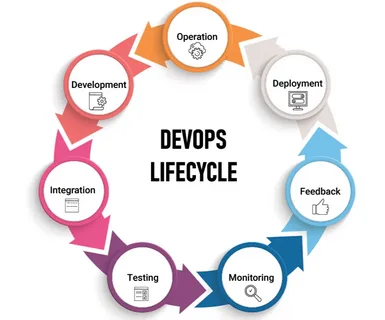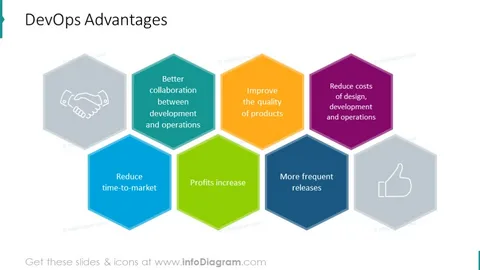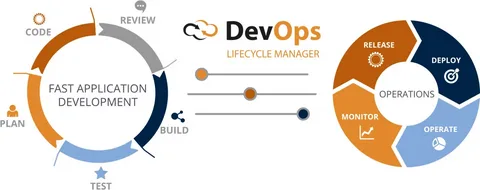Introduction
DevOps, a portmanteau of “Development” and “Operations,” stands as a transformative force in the realm of information technology (IT). More than a mere set of practices or tools, Dev0ps embodies a cultural and procedural shift that harmonizes the traditionally distinct domains of software development and IT operations. Rooted in the pursuit of enhanced collaboration, efficiency, and continuous improvement, DevOps has become a cornerstone in modern software development methodologies. This informative exploration delves into the essence of Dev0ps, elucidating its principles, practices, and the profound impact it wields in reshaping the IT landscape. As organizations strive for agility, faster time-to-market, and increased reliability, understanding the nuances of Dev0ps becomes imperative in navigating the dynamic and ever-evolving field of IT.

Table of Contents
Navigating the IT Landscape: An In-Depth Exploration of DevOps
In the rapidly evolving realm of information technology (IT), the term “DevOps” has emerged as a transformative force, promising to reshape the way organizations approach software development and IT operations. Dev0ps, a fusion of “Development” and “Operations,” is more than just a buzzword; it represents a cultural and procedural shift that transcends traditional boundaries. This article aims to unravel the intricacies of Dev0ps, offering a comprehensive exploration of its principles, practices, and the profound impact it has on the IT landscape.
1. Understanding the DevOps Culture:
Dev0ps is, at its core, a cultural movement that seeks to foster collaboration and communication between development and operations teams. It transcends the conventional silos that often exist in organizations, encouraging a shared responsibility for the entire software development lifecycle. In embracing the Dev0ps culture, teams prioritize transparency, open communication, and a collective commitment to delivering high-quality software.
2. Integration of Development and Operations:
One of the fundamental tenets of Dev0ps is the integration of development and operations teams. Historically, these two functions operated independently, leading to inefficiencies, miscommunication, and delayed project timelines. Dev0ps seeks to break down these silos, promoting a seamless integration where developers gain insights into operational concerns, and operations teams have a deeper understanding of the development process.
3. The Role of Automation in DevOps:
Automation is a cornerstone of Dev0ps practices, aimed at streamlining repetitive tasks, reducing human error, and accelerating the software development lifecycle. Dev0ps teams leverage automation tools to facilitate continuous integration, continuous delivery (CI/CD), testing, and deployment. By automating these processes, teams can achieve greater efficiency, consistency, and reliability in their software delivery.

4. Continuous Integration and Continuous Deployment (CI/CD):
Dev0ps places a strong emphasis on the concept of Continuous Integration (CI) and Continuous Deployment (CD). CI involves the frequent integration of code changes into a shared repository, accompanied by automated testing to ensure that the code remains functional. CD extends this principle by automating the deployment of validated code changes to production environments, enabling a swift and reliable release cycle.
5. Infrastructure as Code (IaC):
Dev0ps extends its reach beyond traditional software development to include the infrastructure itself through the concept of Infrastructure as Code (IaC). With IaC, infrastructure provisioning and management become automated, enabling teams to treat infrastructure configurations as code. This approach enhances consistency, repeatability, and scalability, aligning infrastructure changes with the principles of version control.
6. Impact on IT Operations:
While Dev0ps originated with a focus on development, its impact reverberates significantly within IT operations. Operations teams benefit from improved communication, faster incident resolution, and increased visibility into the development process. Through the adoption of Dev0ps practices, operations become more agile and responsive to changing business needs, contributing to a more resilient and efficient IT ecosystem.
7. Alignment with Business Goals:
Dev0ps is not merely a technical methodology; it aligns IT processes with broader business objectives. By facilitating faster and more reliable delivery of software features and updates, Dev0ps enables organizations to respond swiftly to market changes and customer demands. This alignment with business goals positions Dev0ps as a strategic enabler, empowering organizations to stay competitive in a fast-paced digital landscape.
8. Real-World DevOps Implementation:
To understand the practical implications of Dev0ps, it’s essential to explore real-world examples of successful implementation. Organizations across various industries have embraced Dev0ps to enhance collaboration, accelerate development cycles, and improve the overall quality of their software. Case studies and success stories shed light on the tangible benefits and challenges encountered during the adoption of Dev0ps principles.
9. Challenges and Considerations in DevOps Adoption:
While Dev0ps offers a myriad of advantages, its adoption is not without challenges. Organizations may face cultural resistance, technical complexities, and the need for skillset transformation. Understanding these challenges and implementing strategies to overcome them is crucial for a successful Dev0ps journey. This section explores common hurdles and provides insights into navigating the complexities of Dev0ps adoption.
10. Future Trends and Evolutions in DevOps:
As technology continues to advance, the landscape of Dev0ps is poised for ongoing evolution. Emerging trends such as DevSecOps (Security-DevOps integration), AIOps (Artificial Intelligence for IT Operations), and GitOps (Git-based operations) are shaping the future of Dev0ps practices. This section delves into these trends, offering a glimpse into the evolving landscape of Dev0ps and its potential impact on the future of IT.
Conclusion:
In conclusion, Dev0ps stands as a pivotal force in reshaping the IT landscape. Beyond its technical aspects, Dev0ps embodies a cultural shift that promotes collaboration, efficiency, and continuous improvement. From the integration of development and operations to the automation of processes and the alignment with business goals, Dev0ps has become a cornerstone in modern software development methodologies. As organizations navigate the complexities of the digital age, understanding and embracing the principles of Dev0ps is not merely a choice but a strategic imperative for staying competitive and responsive to the ever-changing demands of the market.

FAQs
1. What is DevOps, and why is it important in the IT industry?
Dev0ps is a cultural and procedural movement that emphasizes collaboration and communication between development and operations teams. It is crucial in the IT industry because it breaks down silos, fosters a shared responsibility for the software development lifecycle, and enhances efficiency, speed, and reliability in delivering software.
2. How does DevOps impact the traditional roles of development and operations teams?
Dev0ps integrates development and operations, encouraging cross-functional collaboration. Developers gain insights into operational concerns, and operations teams understand the development process better. This integration leads to improved communication, faster issue resolution, and a more streamlined software development lifecycle.
3. What role does automation play in DevOps, and why is it essential?
Automation is fundamental to DevOps, automating repetitive tasks across the software development lifecycle. It enhances efficiency, reduces errors, and accelerates processes like continuous integration, testing, and deployment. Automation ensures consistency and reliability in software delivery.
4. Can you explain Continuous Integration (CI) and Continuous Deployment (CD) in the context of DevOps?
Continuous Integration involves frequently integrating code changes into a shared repository, followed by automated testing. Continuous Deployment extends this by automating the deployment of validated code changes to production environments. CI/CD ensures a rapid and reliable release cycle, with a focus on maintaining a deployable state of the code.
5. How does Infrastructure as Code (IaC) contribute to DevOps practices?
Infrastructure as Code (IaC) involves treating infrastructure configurations as code, enabling automated provisioning and management. IaC enhances consistency, repeatability, and scalability, aligning infrastructure changes with version control practices. It plays a crucial role in achieving a more agile and responsive IT environment.
6. How does DevOps align with business goals, and what benefits does it offer to organizations?
DevOps aligns IT processes with broader business objectives by delivering software features and updates faster and more reliably. This alignment enables organizations to respond swiftly to market changes and customer demands, fostering a competitive edge. The benefits include increased efficiency, improved customer satisfaction, and a more resilient IT ecosystem.
7. Are there real-world examples of successful DevOps implementation?
Yes, numerous organizations across various industries have successfully implemented DevOps to enhance collaboration, accelerate development cycles, and improve software quality. Examples include technology giants like Google, Amazon, and Netflix, as well as traditional enterprises like Nordstrom and Nationwide Insurance.
8. What challenges might organizations face in adopting DevOps, and how can they overcome them?
Common challenges in DevOps adoption include cultural resistance, technical complexities, and the need for skillset transformation. Organizations can overcome these challenges by fostering a culture of collaboration, providing adequate training, and gradually implementing DevOps practices with a focus on continuous improvement.
9. What are some emerging trends in DevOps, and how might they shape the future of IT?
Emerging trends in DevOps include DevSecOps (Security-DevOps integration), AIOps (Artificial Intelligence for IT Operations), and GitOps (Git-based operations). These trends are shaping the future of IT by addressing security concerns, leveraging AI for operational efficiency, and streamlining operations through version-controlled workflows.
10. Is DevOps relevant only for large enterprises, or can small and medium-sized businesses benefit as well?
DevOps principles are applicable to organizations of all sizes. While large enterprises often have more complex IT environments, small and medium-sized businesses can benefit from the agility, efficiency, and collaboration that DevOps brings. The key is to tailor DevOps practices to suit the organization’s scale and requirements.
 Nextezone: Igniting Tomorrow's Potential with Innovation Today Innovate. Explore. Elevate. Nextezone – Where Vision Meets Innovation.
Nextezone: Igniting Tomorrow's Potential with Innovation Today Innovate. Explore. Elevate. Nextezone – Where Vision Meets Innovation.
